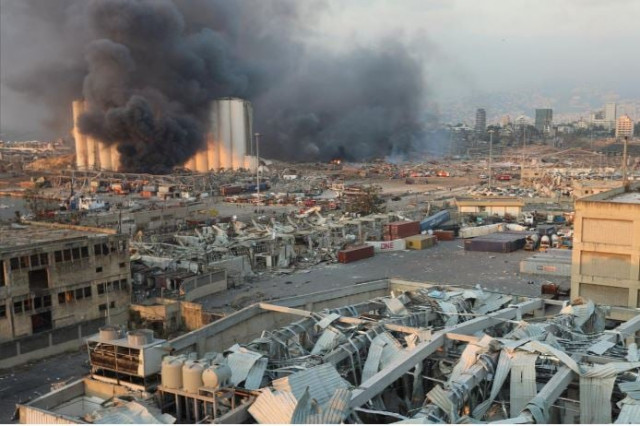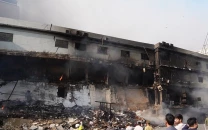What is ammonium nitrate and why is it dangerous?
Some of the world’s deadliest industrial accidents were caused by ammonium nitrate explosions

A massive warehouse explosion in Beirut killed at least 145 people and injured 5,000. Lebanese President Michel Aoun said 2,750 tonnes of ammonium nitrate had been stored for six years at the port without safety measures.
Below are details of ammonium nitrate and expert comment:
- Ammonium nitrate is an industrial chemical commonly used in fertilisers and as an explosive for quarrying and mining. It is an oxidiser considered relatively safe if uncontaminated and stored properly. But it is extremely dangerous if contaminated, mixed with fuel or stored unsafely.
- A large quantity of ammonium nitrate exposed to intense heat can trigger an explosion. Storing the chemical near large fuel tanks, in bulk in large quantities and in a poorly-ventilated facility could cause a massive blast. The larger the quantity, the more risk it will detonate.
"On a scale, this explosion is scaled down from a nuclear bomb rather than up from a conventional bomb,” said Roland Alford, managing director of Alford Technologies, a British company that specialises in disposal of explosive ordnance. “This is probably up there among the biggest non-nuclear explosions of all time.”
- Experts have noted the colour of the smoke and “mushroom cloud” seen in footage of Tuesday’s blast as characteristic of ammonium nitrate explosions.
“Video footage of the incident show initial white-grey smoke followed by an explosion that released a large cloud of red-brown smoke and a large white ‘mushroom cloud’. These indicate that the gasses released are white ammonium nitrate fumes, toxic, red/brown nitrous oxide and water,” said Stewart Walker from the school of Forensic, Environmental and Analytical Chemistry at Flinders University.
“If you make ammonium nitrate explosive, you shouldn’t get that brown plume. That tells me the oxygen balance was not correct - so it wasn’t mixed as an explosive,” he said. “The Beirut blast looks like an accident, unless it was arson.”
Past accidents
Some of the world’s deadliest industrial accidents were caused by ammonium nitrate explosions:
- In 1921, an explosion of ammonium sulphate and nitrate fertiliser at the Oppau plant in Germany killed 565 people.
- In 1947, a fire detonated around 2,300 tonnes of the chemical aboard a vessel in the US port of Texas City, causing a tidal wave. At least 567 people were killed and more than 5,000 injured.
- In Toulouse, France in 2001, an explosion at an ammonium nitrate depot killed 31 and injured 2,500.
- Ammonium nitrate stored at a Texas fertiliser plant detonated in an explosion that killed 14 and injured about 200 in 2013.
- In 2015, explosions at a warehouse storing ammonium nitrate and other chemicals in the Chinese port of Tianjin killed at least 116 people.
Andrea Sella, professor of Inorganic Chemistry at University College London, said of the Beirut blast: “The idea that such a quantity would have been left unattended for six years beggars belief, and was an accident waiting to happen.”
Use in bombings
Ammonium nitrate can be mixed with other substances to make a bomb. It was used in Irish Republican Army (IRA) bombings in London in the 1990s, the 1995 explosion that blew up a federal building in Oklahoma City, killing 168 people, and the 2002 blasts in Bali nightclubs in which more than 200 died. Many of the homemade bombs that were used against US troops in Afghanistan contained ammonium nitrate.



















COMMENTS
Comments are moderated and generally will be posted if they are on-topic and not abusive.
For more information, please see our Comments FAQ